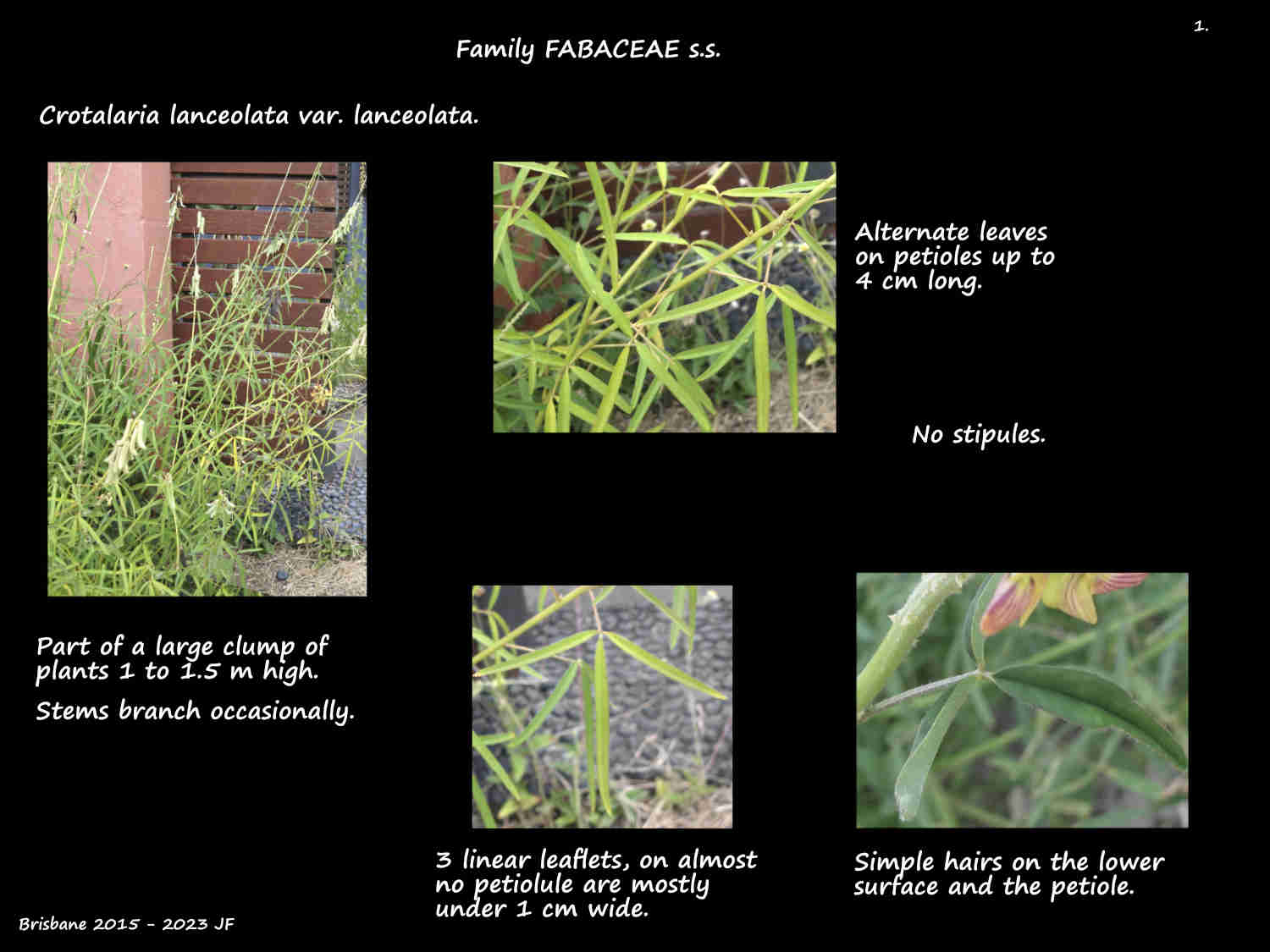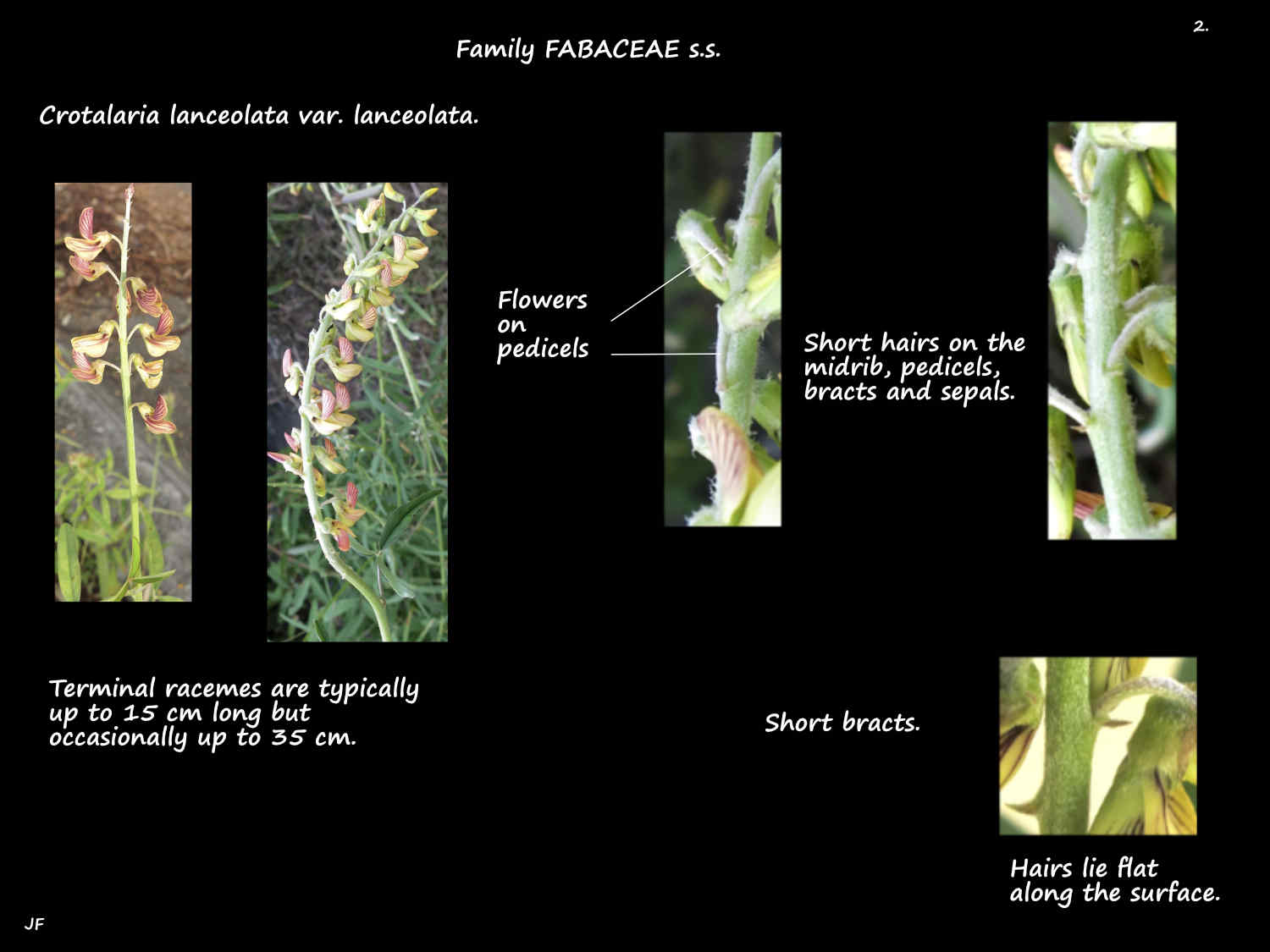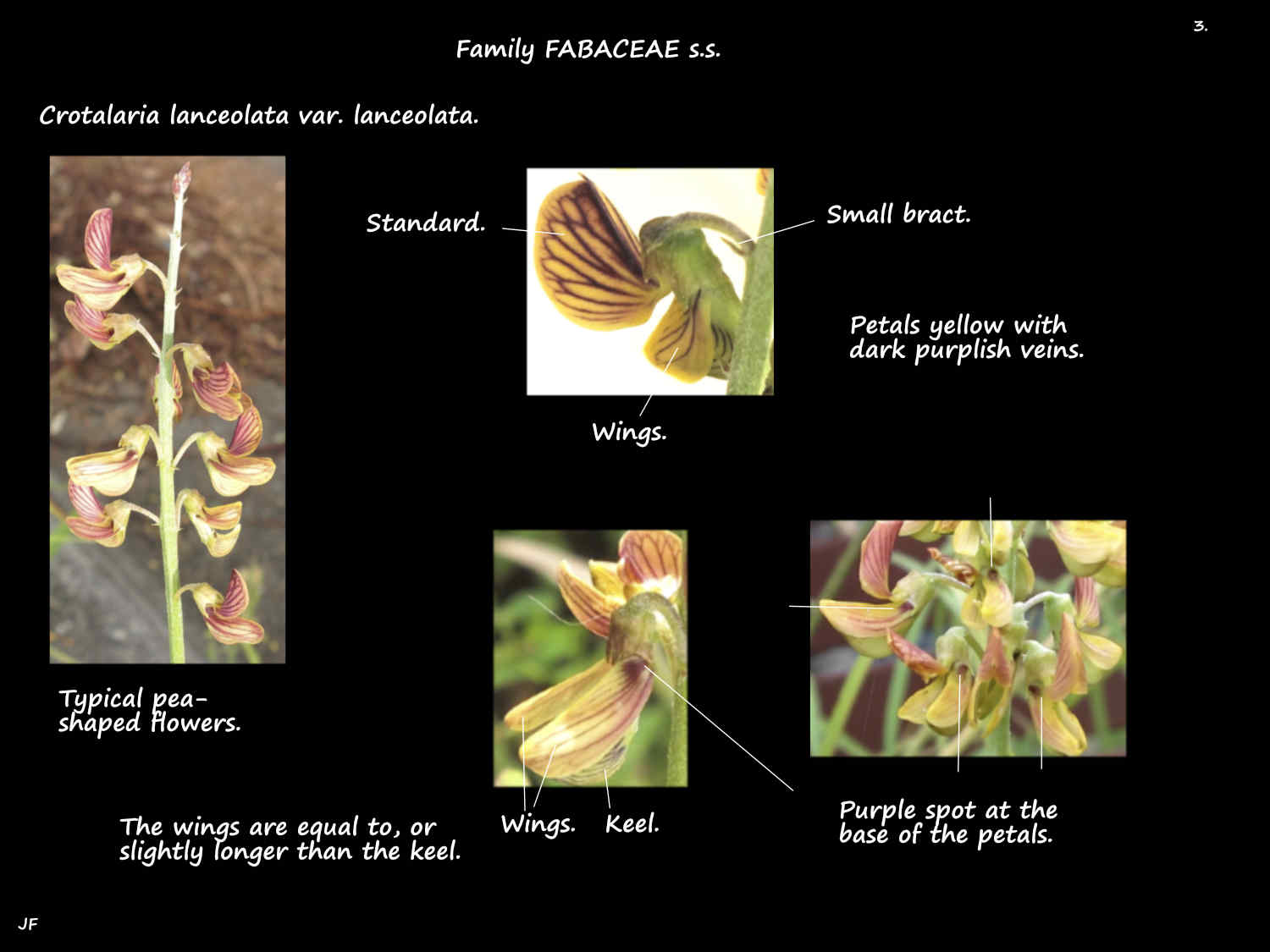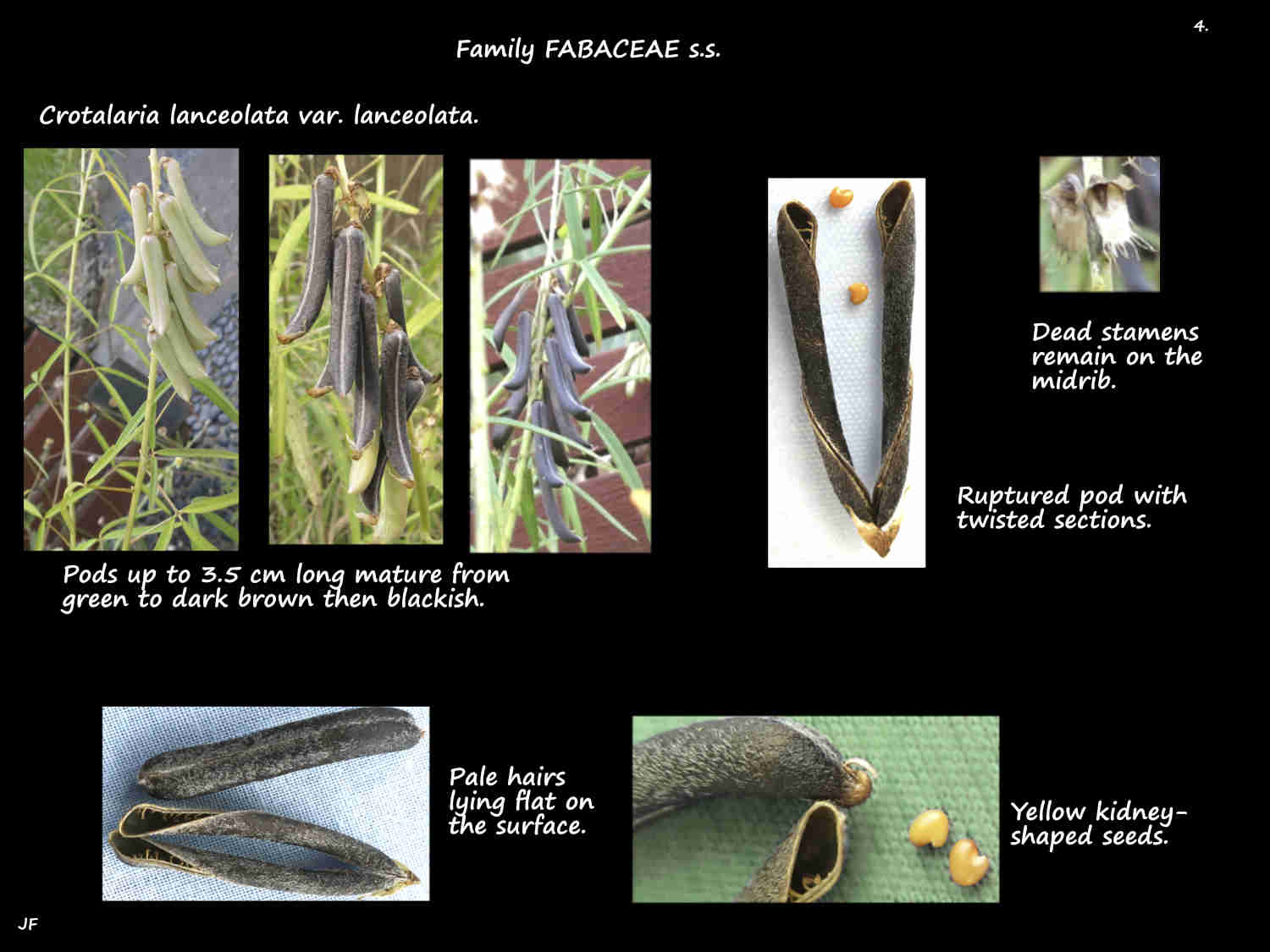Crotalaria lanceolata subsp. lanceolata.
The Lance-leaved Rattlepod, from Africa is naturalised along the eastern Queensland coast.
It is a mainly annual slightly branched herb up to around 1.5 m high.
The longitudinally ribbed stems have scattered hairs that lie flat along the surface.
Alternate leaves are on petioles up to 4 cm long with no stipules at the base.
Leaves, up to 10 cm long have 3 leaflets on short petiolules.
Leaflets are linear to narrowly ovate and mostly under 1 cm wide.
A few lower leaves may be elliptic or obovate and up to 1.5 (2) cm wide.
The edges are smooth and the tips can be pointed or rounded.
The lower surface has some hairs similar to those on the stems.
The upper surface usually has no hairs.
Terminal inflorescences are a raceme typically around 15 cm long but up to 35 cm at times.
Flowers along the raceme midrib are on a pedicel around 5 mm long.
Flowers are 7 to 8 mm long and the lower ones open first.
The sepal bases are fused into a short tube with 5 pointed lobes.
Up to 4 mm long they have a few hairs lying flat along the outer surface.
The typical pea-shape corolla has 5 yellow petals with reddish-purple veins.
The outer surface of the standard has the darkest veins.
Veins on the other petals can be very pale or occasionally absent.
There is a dark purplish spot near the base of the petals.
The upper standard petal is the largest and the 2 lateral wings are usually longer than the keel.
The 2 keel petals are partially fused along their lower surface and folded up.
The 10 stamens have their filament bases fused.
Long basifixed anthers alternate with short dorsifixed ones.
The hairy ovary has numerous ovules in the single locule and 1 style.
The green then blackish pods are up to 3.5 cm long and around 5 mm wide.
They are covered in hairs lying along the surface and the beak is around 5 mm long.
The up to 50 smooth pale yellow kidney-shaped seeds are 2 to 3 mm long.
J.F.






